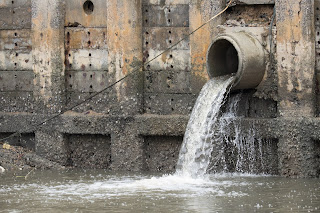WESTMINSTER, CA / ACCESSWIRE / April 30, 2019 / BioLargo, Inc. (OTCQB: BLGO), a technology innovator and full service environmental engineering solutions provider, announced today that its engineering subsidiary had been awarded an SBIR Phase I Competitive Grant by the Environmental Protection Agency in the amount of $100,000 to investigate solutions for the removal of per- and polyfluoroalkyl substances (PFAS) from water. PFAS have been linked to cancer, fertility problems, asthma, and more, and are present in a vast range of manufactured goods including food, common household products (e.g., cleaning products, cookware), and electronics. PFAS also pose widespread and serious water safety problems around the world, with governments and industry actively seeking new technologies and processes to eliminate PFAS from groundwater and drinking water.
The mission of the SBIR (Small Business Innovation Research) program is to support scientific excellence and technological innovation through the investment of Federal research funds in technologies that have the potential for commercialization. The objective of ''Phase I'' research grants are to establish the technical merit, feasibility, and commercial potential of the proposed research and development efforts, and to determine the quality of performance of the small business awardee organization prior to providing further Federal support.
Randall Moore, President of BLEST commented, ''the removal of PFAS contaminants from water presents an important and very difficult challenge. Our team's extensive work in environmental engineering and remediation combined with our comprehensive work in electro-chemistry, advanced oxidation processes and advanced water treatment solutions combine to make our team uniquely qualified to solve issues surrounding environmental PFAS.''
Dennis P. Calvert, President and CEO of BioLargo added, ''This is another example of BioLargo's unique ability to leverage its science and engineering capabilities to deliver innovative real-life solutions to big problems that threaten our water, air and life. We earn the trust of our clients every day by delivering results and value in the most difficult cases. We are also grateful to the US EPA for recognizing our capabilities and supporting our efforts in finding solutions for the removal of PFAS from the environment.''
About BioLargo, Inc.
BioLargo, Inc. is an innovative technology developer and environmental engineering company driven by a mission to "make life better" by delivering robust, sustainable solutions for a broad range of industries and applications, with a focus on clean water, clean air, and advanced wound care. We develop and commercialize disruptive technologies by providing the capital, support, and expertise to expedite them from "cradle" to "maturity" (www.biolargo.com). Our engineering division features experienced professional engineers dedicated to integrity, reliability, and environmental stewardship (www.biolargoengineering.com). Our industrial odor control division, Odor-No-More (www.odornomore.com) features CupriDyne Clean Industrial Odor Eliminator (www.cupridyne.com), which eliminates the odor-causing compounds and VOCs rather than masking them, and is now winning over leading companies in the solid waste handling and wastewater industries and other industries that contend with malodors and VOCs. Our subsidiary BioLargo Water (www.biolargowater.ca) develops the Advanced Oxidation System "AOS," a disruptive industrial water treatment technology designed to eliminate waterborne pathogens and recalcitrant contaminants with better energy-efficiency and lower operational costs than incumbent technologies. Our subsidiary Clyra Medical (www.clyramedical.com) features effective and gentle solutions for chronic infected wounds to promote infection control and regenerative tissue therapy.
Contact Information
Dennis Calvert President and CEO BioLargo, Inc. 800-400-2863 x 2
Safe Harbor Act
This press release includes ''forward-looking statements'' within the meaning of the safe harbor provisions of the United States Private Securities Litigation Reform Act of 1995. Actual results may differ from expectations, estimates and projections and, consequently, you should not rely on these forward-looking statements as predictions of future events. Words such as ''expect,'' ''estimate,'' ''project,'' ''budget,'' ''forecast,'' ''anticipate,'' ''intend,'' ''plan,'' ''may,'' ''will,'' ''could,'' ''should,'' ''believes,'' ''predicts,'' ''potential,'' ''continue,'' and similar expressions are intended to identify such forward-looking statements. These forward-looking statements involve significant risks and uncertainties that could cause the actual results to differ materially from the expected results.




